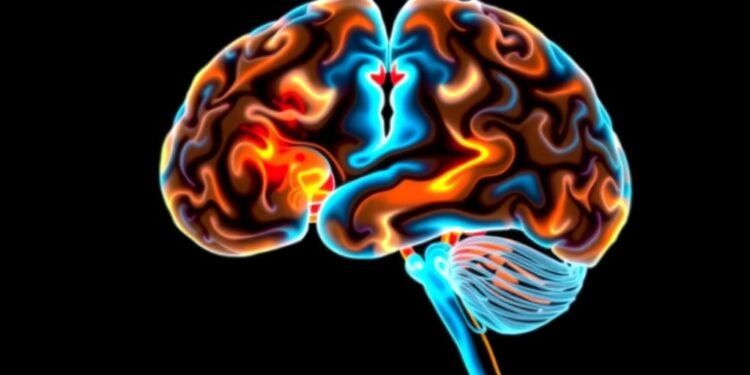Mass General Brigham researchers have uncovered significant insights into the relationship between early life adversities and brain development, particularly focusing on white matter connectivity during adolescence. Their findings, published in the prestigious Proceedings of the National Academy of Sciences (PNAS), illustrate how challenging childhood experiences can detrimentally affect the structure and functionality of crucial brain networks that facilitate cognition and behavior. This groundbreaking research positions white matter—the brain’s communication highways—as a pivotal factor linked with cognitive performance, with specific attention to the impacts of different types of early life stressors.
The investigators, led by Sofia Carozza, PhD, and Amar Dhand, MD, PhD, from the Department of Neurology at Brigham and Women’s Hospital, used advanced brain imaging techniques to analyze data from over 9,000 children enrolled in the Adolescent Brain Cognitive Development (ABCD) study. This extensive research initiative, backed by the National Institutes of Health and carried out at 21 sites across the United States, sought to catalog a wide array of factors affecting childhood development, including environmental influences, cognitive abilities, and mental health outcomes.
White matter is essential for the efficient transmission of neural signals between various brain regions. It establishes the integrity of neural pathways, playing a crucial role in cognitive functions such as language processing and mathematical reasoning. The researchers’ utilization of diffusion imaging allowed for a quantifiable measure of white matter integrity through fractional anisotropy (FA), a metric indicative of the health and organization of these neural connections. By employing computational models, they were able to draw connections between early environmental influences and cognitive outcomes in adolescence.
Notably, the scope of their findings challenges previous assumptions about the localized impact of early life adversity on brain structure. Carozza remarked that the relationship between white matter quality and early life experiences extends far beyond specific tracts—indicating that virtually the entire brain is affected by adverse experiences encountered in childhood. This revelation emphasizes the need to consider a holistic view of brain development, wherein external factors play a determinative role.
The data highlighted particularly concerning trends, as lower white matter quality was associated with diminished cognitive performance in key areas including mental arithmetic and receptive language. These deficits were not merely incidental; they were rooted in the structural alterations induced by stressors encountered during formative years. The correlation between adverse childhood experiences and cognitive deficits underscores the lingering impacts of these challenges, often culminating in struggles with learning and emotional regulation in adolescence.
However, amid these challenges, the researchers have pointed to potential protective factors that can mitigate the adverse effects of early life adversity. Elements such as neighborhood cohesion and positive parenting practices emerged as significant variables that could foster resilience in children. This insight suggests that while the environment plays a formidable role in shaping cognitive development, supportive social structures may empower children to overcome significant obstacles.
Despite the compelling nature of these findings, Carozza and Dhand acknowledge the limitations inherent in their study, which primarily relies on observational data. The cross-sectional design restricts the ability to make definitive causal claims regarding the influences of early life adversity on white matter integrity and cognitive functioning. Future prospective studies that track individual children over extended periods while documenting changes in brain imaging are essential for establishing more robust conclusions.
The implications of this research are profound; they advocate for a societal shift towards creating environments that promote stability and health, particularly in childhood. Recognizing that early experiences significantly shape the developmental trajectories of children may inform public policy, healthcare approaches, and educational strategies aimed at improving child welfare.
The connection between adverse childhood experiences and cognitive outcomes reminds us of the nuanced interplay between biology and environment that characterizes human development. Just as the brain develops in response to external stimuli, social and emotional support systems can nurture resilience and cognitive potential, highlighting the importance of fostering healthy developmental environments.
As this research gains traction, it elevates the conversation surrounding childhood adversity, inviting further discourse on the need for comprehensive support systems that recognize the multi-faceted influences on a child’s upbringing. Ultimately, prioritizing the well-being of children through community-oriented and supportive frameworks is essential to nurturing not only healthier brains but also more resilient individuals capable of thriving despite life’s challenges.
By illuminating the intricate relationships between early life experiences, white matter development, and cognitive function, this study contributes significantly to both the fields of neuroscience and child psychology. It paves the way for future research that could lead to groundbreaking interventions, aiming to foster resilience and cognitive health in the face of adversity. Through continued inquiry and communal commitment, society can work towards ensuring that every child has the opportunity to flourish in a supportive environment.
In conclusion, the findings from Mass General Brigham shed light on the critical need for awareness and intervention in the lives of children facing adversity. By understanding how early experiences shape brain development, we can better equip ourselves to address the deficits that stem from these experiences, ultimately paving the way towards a healthier and more equitable future for all children.
Subject of Research: People
Article Title: Whole-brain white matter variation across childhood environments
News Publication Date: 7-Apr-2025
Web References: Mass General Brigham, PNAS
References: Carozza S et al. “Whole-brain white matter variation across childhood environments” PNAS DOI: 10.1073/pnas.2409985122
Image Credits: None
Keywords: Childhood adversity, white matter, brain development, cognitive function, resilience, social environment, neurodevelopment, early life experiences.




